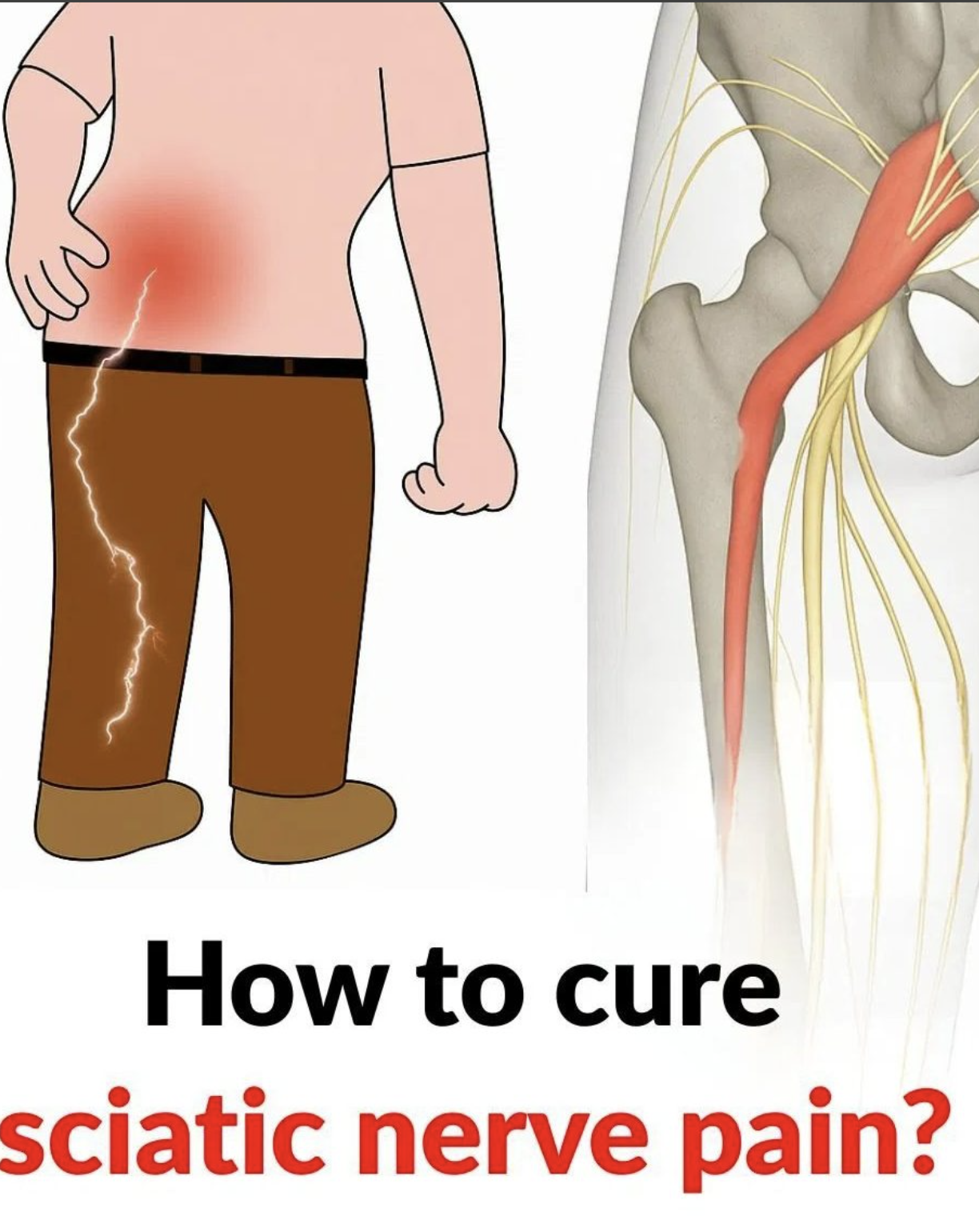- Herniated or bulging discs in the spine
- Tight piriformis muscle (a muscle in the buttocks that can compress the sciatic nerve)
- Spinal stenosis (narrowing of the spinal canal)
- Degenerative disc disease
- Poor posture or prolonged sitting
While sciatica can be painful and limiting, gentle stretching can help relieve pressure, improve mobility, and promote healing — without the need for medication or surgery in many cases.
3 Gentle Stretches to Relieve Sciatica Pain
These beginner-friendly stretches are designed to target the lower back, hips, and glutes , where sciatic nerve compression often occurs. Perform them slowly and mindfully , breathing deeply throughout each movement.
⚠️ Note: If you experience increased pain or numbness , stop immediately and consult a healthcare professional.
1. Piriformis Stretch (Lying Down)
Why it helps: The piriformis muscle runs directly over the sciatic nerve. When tight, it can compress the nerve and cause sciatica-like symptoms.
How to do it:
- Lie on your back with your knees bent and feet flat on the floor.
- Cross one ankle over the opposite knee, forming a “figure 4” shape.
- Grab the back of the thigh of the bent leg and gently pull it toward your chest.
- Hold for 30 seconds , then switch sides.
Tip: Do this stretch 2–3 times per side , 1–2 times daily.
2. Knees-to-Chest Stretch
Why it helps: This stretch gently massages the lower back and eases pressure on the sciatic nerve .
How to do it:
- Lie on your back with your knees bent and feet flat.
- Bring one knee toward your chest, holding it with both hands.
- Gently pull the knee closer while keeping the opposite foot flat on the floor.
- Hold for 20–30 seconds , then switch legs.
Tip: You can also pull both knees to your chest at once for a full lower back stretch.
3. Seated Sciatic Nerve Glide (Chair or Floor)
Why it helps: This movement gently stretches and mobilizes the sciatic nerve , improving flexibility and reducing nerve irritation.
How to do it:
- Sit on a chair or the edge of your bed with your back straight.
- Extend one leg out in front of you, heel on the floor, toes pointing up.
- Gently tilt your head forward as you flex your foot toward you .
- Hold for 10–15 seconds , then relax and repeat 3–5 times per leg .
Tip: Keep your back straight and avoid overextending.
Bonus: Additional Stretches for Sciatica Relief
If you’re feeling up to it, these extra stretches can further support sciatic nerve health:
🧘 4. Cat-Cow Stretch (on all fours)
- Helps loosen the spine and relieve tension in the lower back.
🧍 5. Standing Hamstring Stretch
- Targets the hamstrings and lower back , which can become tight and contribute to sciatica.
🧍 6. Pelvic Tilt
- Strengthens the core and stabilizes the lower back , reducing pressure on the sciatic nerve.
Tips for Managing Sciatica Pain
- Stay active – Prolonged sitting can worsen symptoms.
- Use a supportive chair – Choose one with good lumbar support.
- Apply heat or ice – Heat can relax muscles, while ice can reduce inflammation.
- Maintain good posture – Especially when sitting or lifting objects.
- Wear supportive shoes – Proper footwear supports spinal alignment.
When to See a Doctor
While mild sciatica often improves with stretching and self-care , you should see a healthcare provider if:
- Your pain lasts more than a week
- You experience weakness or numbness in your leg
- Pain worsens when sitting or standing
- You have loss of bladder or bowel control (a sign of a serious condition)
A physical therapist or chiropractor can also help create a personalized stretching and strengthening plan .
Frequently Asked Questions
❓ Can stretching help sciatica?
Yes! Stretching can relieve pressure on the sciatic nerve , improve flexibility , and reduce pain .
❓ How often should I stretch for sciatica?
Aim to stretch 1–2 times per day , especially if you sit for long periods.
❓ What should I avoid with sciatica?
Avoid heavy lifting, twisting motions, and prolonged sitting without breaks.
❓ Is walking good for sciatica?
Yes! Walking is a low-impact exercise that can help reduce inflammation and improve mobility .
Final Thoughts
Sciatica pain can be debilitating , but the good news is that simple, gentle stretches can offer real relief — often without the need for medication or surgery.
Whether you’re dealing with occasional flare-ups or chronic discomfort, incorporating these stretches into your daily routine can help you move with more ease, sleep better, and feel more like yourself again .
So take a deep breath, roll out your mat, and give your body the gentle care it deserves.
